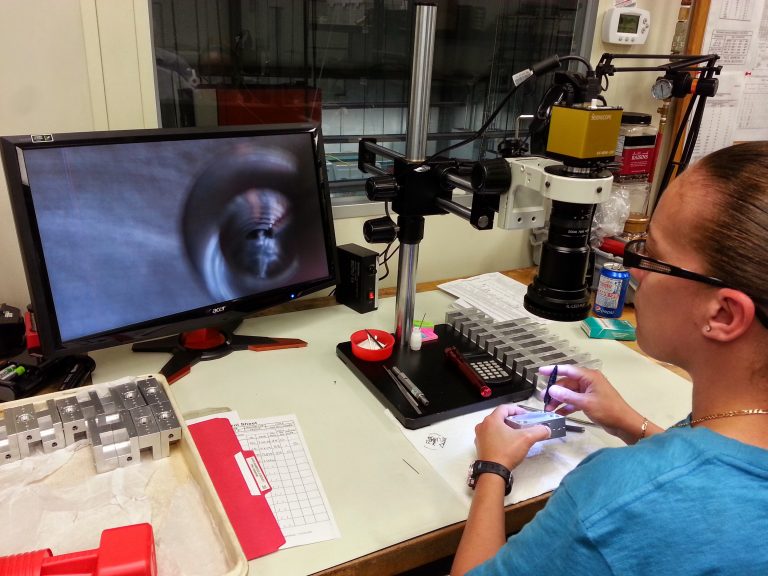Deburring / Finishing
All manufactured components have some burring—it’s normal. Precision micro-deburring is a finishing process that removes any sharp edges left on parts from cutting tools or grinding wheels during the machining operation. Removing burrs with pinpoint accuracy is integral to supplying products to your exact specifications. Machine Inc. is an expert at micro-deburring, ensuring that all components are completely deburred with the utmost precision, keeping the dimensional integrity of your part intact.
Each piece is handled one-at-a-time, using specialized tools, and every component undergoes a strict visual inspection process. All work is monitored under magnification, with a big screen assisting to provide a high-level overview. Many of our customers are in industries, such as aerospace and medical, which have strict tolerances for form, fit, and function and depend on characteristics like even fluid or oxygen flow through all components and manifolds. We machine a wide range of manifolds and related components, and whether they are manifolds for precise control of gasses or fluids, we understand that there cannot be ANY burrs—and we guarantee it.

Precise attention to microscopic detail.
About Deburring
Deburring is a process of precision, which requires skilled technicians to deburr the parts under a microscope via hand lapping, hand polishing, or by applying very small brushes and tools, or polishing wheels. Types of burrs we remove:
- Fine feather or poisson: these are fine filaments of metal on edges, which bulge at the sides when compressed; usually caused by final surface grinding that heats the metal locally and spins these filaments out, tangent to the grinding wheel
- Rollover: the most common type of burr, caused by a chip that is bent rather than sheared, resulting in a comparatively larger burr; also known as an exit burr because it is usually formed at the end of a cut in face-milling
- Thread: a common problem with special threads with no thread form inserts; often the last thread of a part can be rolled over
- Break-Out: also called a tear, formed when work material ruptures (as opposed to deforms) at the end of the cut; in reciprocated blanking, these burrs can form on the sheared surface of a crack if the punch penetration advances too much in the first step
Finishing
Beyond the deburring phase, Machine Inc. works closely with platers and surface coaters to ensure that your components are processed to exacting plating and finishing specifications, adhering to MIL specs and ROHS/NADCAP-approved sources. We work with carefully selected finishing sources and after outside plating processing, your parts go through a final visual and dimensional inspection.
When you entrust your machining to us, we know you are depending on us to deliver on all aspects of the job. Quality isn’t just a step in the process, it is at the core of how we operate. It’s Machine Inc.’s quality blueprint that provides you better service, part of our inherent value that makes us unique in this industry.
